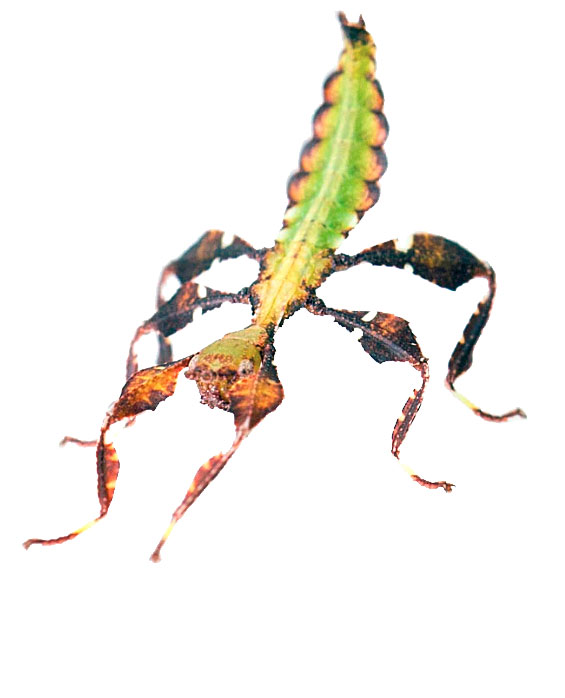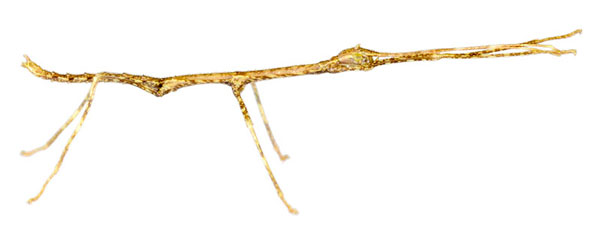
When raising nymphs, one should keep in mind that these are usually more sensitive and fragile regarding disturbances than adults, and sometimes they require a more humid atmosphere for successful moulting. Generally, it is best to keep nymphs separate from the adults, to prevent them from being disturbed during their moulting. This is especially true for species like Phyllium, Eurycnema or Cranidium or species with small and fragile nymphs (e.g. Lopaphus spp. or Pseudodiacantha macklottii).
For very large species, e.g. Eurycnema, Phobaeticus or Pharnacia, it has proven very advantageous to keep subadult (= final nymphal instar) nymphs each in one cage for its own. This decreases the danger of difficulties during the final moult. Netting cages or terrariums with a minimum height of 50 cm are used with the food plant specifically placed in the upper third of the cage. There should not be any branches or similar in the lower two-thirds of the cage! This compels the insects to stay close to the top of the cage and enables them to have enough space below them for a successful final moult.
The number of insects depends on the size of the cage. If too many specimens are kept together in the same cage, this causes stress and high competition which can result in high mortality of nymphs (more on overpopulation). In such overcrowded situations, they often disturb each other during moulting, which may cause the loss of legs. Or the moulting nymph even falls to the ground, which inevitably results in death.
Immediately after a successful moult, the phasmids usually hang on their old skin, waiting for the new chitin to harden. And later on, they even eat the old skin. The consumption of old skin may play an important role, as it contains physiologically important components. Just after their moult, they are very vulnerable, and the new chitin is still weak and soft. The final moult has shown to be problematic in some of the large and winged species.
When young nymphs are sprayed one should take care that the water is vaporized finely, as fragile nymphs could stick to bigger water droplets and even drown. However, it is beneficial to offer nymphs a more humid atmosphere than the adults, to enable successful moulting. Humidity should be checked regularly. For species which prefer a drier and better-ventilated atmosphere yet require plenty of humidity during moulting it has proven to be useful to cover the cage with plastic foil during the night and/or to put a container with damp sand or vermiculite on the cage floor. This ensures plenty of humidity at night when many phasmids moult. The plastic foil or the container with damp soil should then be removed from the cage in the morning. This method has proven prolific with species like e.g. Eurycnema, Monandroptera.
In certain species (e.g. Phyllium) males reach maturity quicker than females, as male phasmids have one moult less than females. In addition, the lifespan of adult phasmid males is tendentially a bit shorter than in females. They might die already after 6-10 weeks. Thus the females may reach maturity when all the males from the same generations are already dead. To prevent this problem there is the possibility to keep the male nymphs separate from the females and at much lower temperatures (at least 5 °C below the temperatures used for females). This helps to extend the duration of the male's nymphal development and to have adult males and females around the same time. More on the subject that males mature too quickly.

Sometimes newly hatched nymphs of some species have problems starting feeding, which can cause high losses. This can often be solved by cutting off the leaf margins, increasing the number of nymphs in the cage or introducing larger nymphs, while still being careful to avoid overpopulation.
For handling small nymphs it is best to use a pair of spring-steel tweezers with a rounded tip (for nymphs of robust species like Haaniella or Dares) or a soft brush (for fragile nymphs of species like Phyllium, Pseudodiacantha, Trychopeplus or Pharnacia).